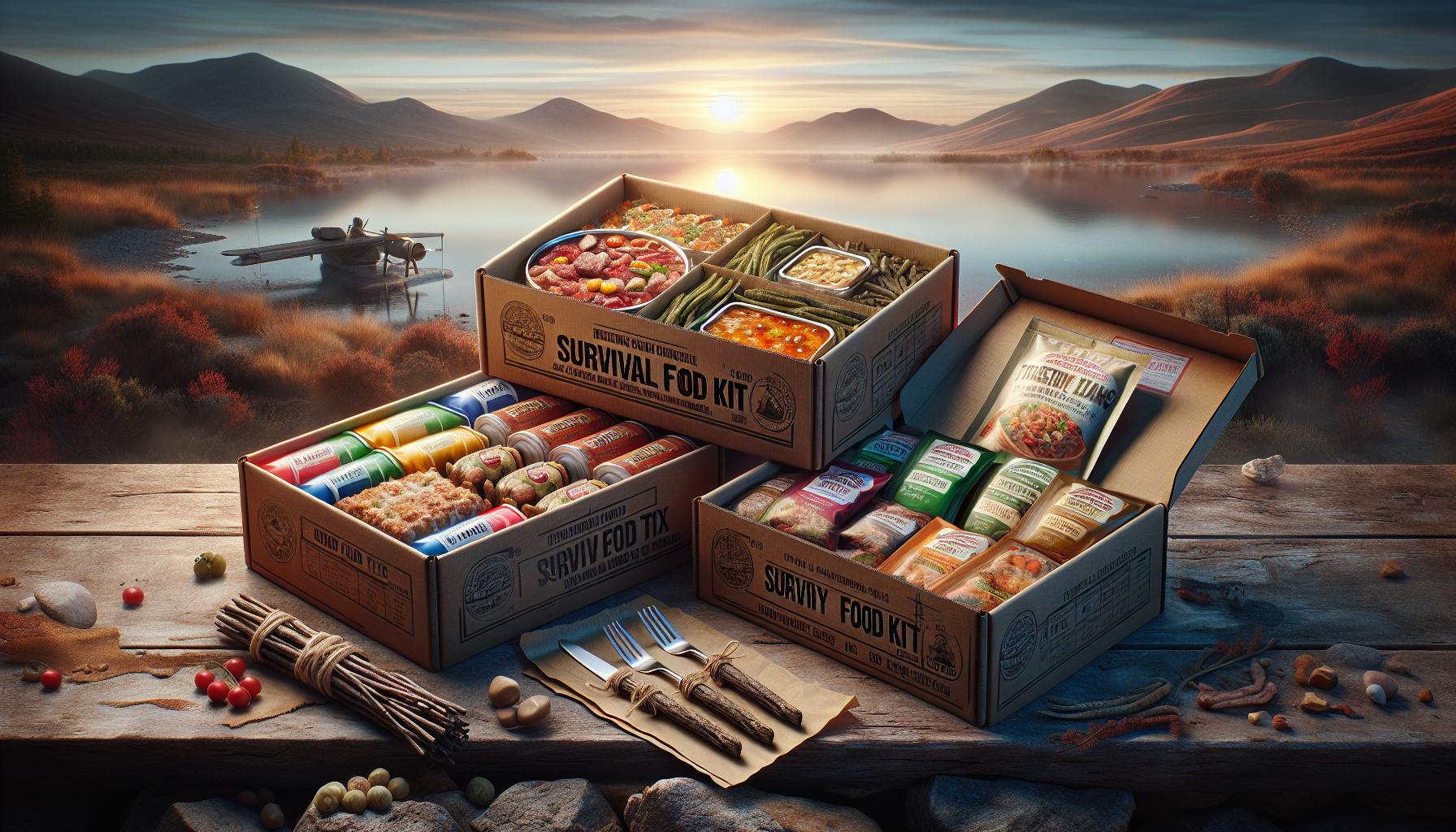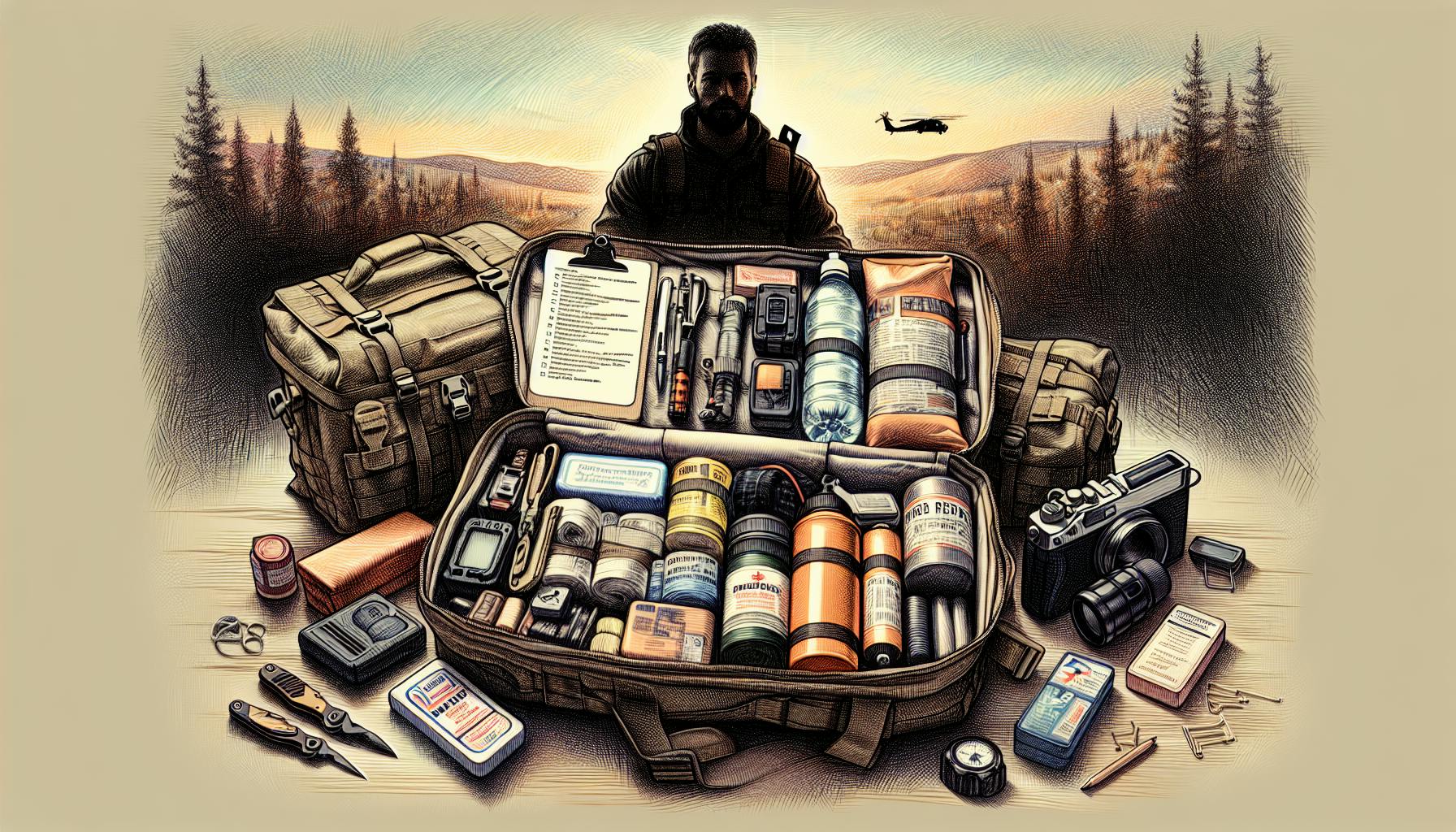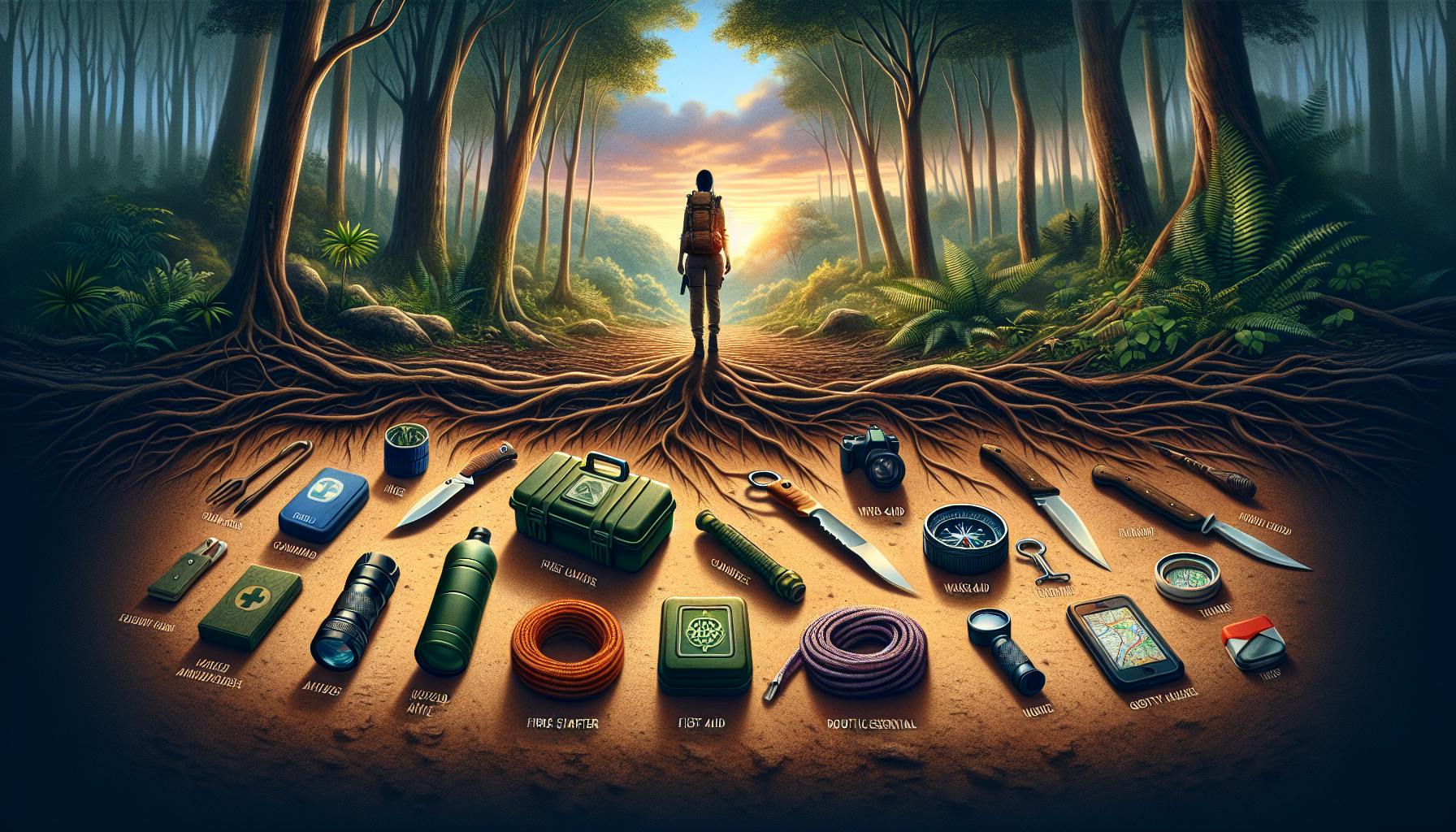No parent wants to imagine their family going hungry in an emergency.
With the right emergency food kit, you can rest assured your loved ones will stay safe, healthy, and fed even in a crisis.
In this guide, we'll cover the critical factors for choosing the best emergency food supply to meet your family's unique needs, from portion sizes to dietary restrictions. You'll find unbiased reviews of the top family-friendly options to simplify your decision, along with optimal storage tips to maximize freshness and shelf life.
Introduction
As the saying goes, "Hope for the best, prepare for the worst." When it comes to emergency preparedness for families, having reliable food supplies is crucial. Emergency food kits provide sustenance during disasters like hurricanes, blizzards, or power outages when stores may be inaccessible. They ensure everyone's nutritional needs are met until regular food sources are restored.
This article will explain why emergency preparedness matters and provide an overview of the best emergency food kits to keep families fed. Key factors like nutritional balance, shelf life, and palatability are considered to suit both kids and adults. Top-rated options from leading brands like Mountain House and Wise Foods are featured to help families prepare for the unexpected.
Understanding the Importance of Emergency Preparedness
Emergencies can strike suddenly, disrupting normal life for days or even weeks. Having emergency food on hand eliminates worries about where the next meal will come from. Food kits designed for disasters provide balanced nutrition to support health and avoid hunger pangs. For families, the stakes are even higher with children to feed.
Government agencies like FEMA recommend keeping at least three days of non-perishable food available per person. But experts suggest a two-week supply or more. Kits with freeze-dried or dehydrated ingredients offer long 25-year shelf lives. Portioned entrées cater to a family's needs from breakfast through dinner.
Investing in an emergency food kit brings peace of mind. Disasters will inevitably occur, but adequate family food reserves can alleviate serious hardships.
Overview of the Best Emergency Food Kit for Survival
When choosing emergency food, key criteria include nutritional balance, extended shelf life, good taste, and easy preparation with just boiled water. Mountain House and Wise Foods kits excel in these areas with tasty, textured meals the whole family enjoys.
Top picks provide quick breakfasts, lunches, dinners across 2,000+ calories daily. Options like scrambled eggs, chili, rice, pasta, and apple crisp satisfy kids and adults. Vacuum sealing and advanced packaging preserve freshness up to decades. Affordable kits start under $100 for a week's worth of meals.
Having reliable food reserves allows families to endure all types of emergencies from weather disasters to power grid failures. Investing in a quality survival food kit reduces uncertainties and provides nutritious insurance during catastrophes.
Assessing Your Family's Emergency Food Needs
When preparing an emergency food supply for your family, it's important to carefully assess everyone's needs to ensure no one goes hungry. Here are some key considerations:
Calculating Adequate Portion Sizes
- Estimate calorie requirements for each family member based on age, gender, size, and activity level
- Allow for extra calories when planning for emergency situations involving physical exertion or stress
- Aim for at least 2,000-2,500 calories per day per person
- Include a variety of nutrient-dense foods like proteins, fruits, vegetables, and whole grains
Emergency Food Supply for Family of 4
- A best emergency food kit for a family of 4 should contain at least a 3-day supply of food and water
- To sustain a family of 4 for 2 weeks, plan for around 100,000 total calories
- Prioritize non-perishable, ready-to-eat foods as well as staples that can be prepared with minimal tools
- Lightweight, portable options are best for evacuation situations
Special Dietary Considerations
- Check for any food allergies or intolerances within the family
- Include allergen-free foods or safe substitutes
- Have on hand any necessary medications like epinephrine auto-injectors
- Those with diabetes will need foods that help maintain healthy blood sugar levels
The Role of Hydration in Emergency Planning
- Each person needs around 1 gallon or 4 liters of water per day
- Include durable, BPA-free water bottles or pouches and water purification tools
- Rotate out water supplies every 6 months to keep it fresh
- Have contingency plans for sourcing water such as nearby streams or rainwater collection
sbb-itb-b932644
In-Depth Reviews of Family-Friendly Emergency Food Kits
Emergency food kits provide critical nourishment when disasters or emergencies arise. For families with children, finding options that cater to both adults' and kids' tastes and nutritional needs is key. This article explores some top contenders for reliable, long-shelf-life food kits suitable for the whole household.
ReadyWise Emergency Food Supply
The ReadyWise Emergency Food Supply offers a turnkey solution for families seeking substantial quantities of survival food. With a 25-year shelf life, this bucket-stored kit includes over 104 servings of hearty staples like rice, pasta, potatoes, oats, breakfast cereal, veggie chili, Alfredo pasta, cheesy broccoli rice, Southwest beans and rice, apple cinnamon cereal, freeze-dried fruits, vegetables, meats and more. The portions aim to provide 2,000 calories daily for one adult.
This kit hits key needs for households with kids. It incorporates familiar favorites to make meals more palatable for picky eaters. The freeze-dried and dehydrated ingredients retain more texture and flavor than cheaper alternatives. Daily vitamins supply critical micronutrients growing children require. Foil pouches of water allow for easy preparation without relying on questionable water sources. These well-rounded offerings explain its popularity among families focused on emergency food supply for family of 4 needs.
On the downside, some ingredients like textured vegetable protein lack appeal to kids. Supplementing with additional proteins or produce can offset this. While costly upfront, the 25-year lifespan makes this a sound long-term investment in emergency preparedness. Overall, ReadyWise presents a turnkey, nutritionally balanced emergency food kit suitable for most families.
25-Year Emergency Food Supply Options
For maximum shelf life, many households opt for 25-year emergency food supply kits promising decades of reliability. Products like Wise Food Storage Emergency Bucket and Augason Farms 30-Day Emergency Food Supply offer robust survival rations with an exceptionally long lifespan.
These often include familiar ingredients like pasta, rice, oatmeal, potato flakes, canned meats, fruits, vegetables, beans and more. The focus centers on nutrient-dense non-perishables selected for caloric density, ease of preparation, broad appeal and lengthy shelf stability. While blander than fresh foods, they provide the basics families need in emergencies. Freeze-dried and dehydrated options retain more flavor and texture than cheaper alternatives.
The main downside, beyond the relatively high price tag, remains convincing kids to enjoy these meals. Adding sauces, spices, butter, cheese and other embellishments can make them more palatable. Overall, 25-year food kits present reliable, long-lasting nutrition to feed the whole family when normal supply chains fail.
Cost vs. Quality in Emergency Food Kits
When selecting an emergency food kit to secure your family’s future, you want optimal nutrition at the best possible price. But in reality, significant trade-offs exist between cost and quality. Cheaper kits often rely on lower-quality ingredients, less precise processing standards, and fewer flavor-preservation techniques. These cut corners risk faster spoilage, vitamin degradation and unpalatable meals.
More reputable brands like Mountain House and Wise Company charge premium pricing for good reason. Their exacting processes maximize shelf life and retain nutrition, texture and taste. Rather than gloppy, bland or mushy ingredients, you get high-quality proteins, fruits, vegetables and carbs—as close to fresh as possible. This results in kits with broader appeal and staying power.
When an emergency strikes, what you save upfront buying inferior food kits quickly pales compared to the value of having appetizing, nutritious rations. Spending more for quality provides better insurance your family will actually eat the meals. Testing cheaper brands can help find an acceptable balance between cost and quality to suit your family’s preferences. But don’t let price alone dictate a decision you’ll be grateful for later.
Kid-Approved Choices in Emergency Food Kits
Picky eaters pose one of the top challenges when selecting an emergency food kit for the whole family. If your kids take one bite of an unappealing ingredient like textured vegetable protein and refuse to touch the rest, your efforts at preparedness quickly unravel.
When possible, test samples of different kits to gauge reactions. Wise Company, Mountain House, Thrive Life, and Augason Farms receive high marks for their fruits, vegetables, dairy products and proteins—freeze-dried or dehydrated options closest to fresh foods kids recognize. If taste tests aren’t feasible, read online reviews highlighting first-hand experiences with finicky young diners.
Also consider adding supplemental ingredients to enhance flavor and nutrition. Butter, cheese sauce, ranch dressing, bacon bits, sweetened condensed milk, honey, salt and other flavor-boosters liven up blander pantry staples. Stocking age-appropriate multivitamins also helps safeguard growing kids’ nutritional needs when fresh produce proves scarce.
While no pre-packaged kit satisfies all palates, selecting one with proven kid appeal boosts the chances your family will thrive when relying on emergency rations. Conduct due diligence to find the best fit.
Optimizing Storage for Your Emergency Food Kits
Ideal Storage Conditions for Longevity
To maximize the shelf life of your emergency food supply, store it in a cool, dry, and dark location. The ideal temperature is between 50-70°F. High heat, humidity, and light exposure can accelerate spoilage. Store foods in air-tight containers, and use oxygen absorbers or desiccants if the packaging allows. Rotate stock routinely, using older items first. Track expiration dates and plan ahead to replace aging supplies.
Protecting Your Supply from Pests and Contaminants
Keep storage areas clean, dry and tightly sealed. Inspect containers periodically for signs of pests like insects or rodents. Use traps if needed. Store open bags of rice, grains, etc. in resealable buckets. Wipe cans before shelving and avoid placing food directly on floors or against walls. Maintain proper ventilation and air circulation.
Organizational Systems for Easy Access
Organize by food type, date, serving size for efficient access. Label shelves and bins clearly. Maintain an inventory list detailing exact locations and quantities. Group like items together, with the oldest stock in front to use first. Leave space for maneuvering. Have emergency lighting available if the power fails.
Regular Inventory Checks and Updates
Check expiration dates every 6 months. Inspect for damage, leaks, pests. Confirm sufficient calories/nutrients remain for your family. Note any shortages to replace. Update medical supplies/filters/batteries as needed. Rotate stock using FIFO method. Remove anything expired or spoiled immediately. Keep records to streamline the process over time.
Conclusion
Final Thoughts on Choosing the Best Emergency Food Kit
Having a well-stocked emergency food kit is an essential part of any family's preparedness plan. When selecting your kit, be sure to consider portion sizes, nutritional balance, taste preferences, and shelf life. Ready-to-eat meals, fruits, vegetables, proteins, and snacks should all be accounted for.
Focus on quality over quantity - taste and nutrition matter when planning for an emergency. Consider ready-to-prepare options as well for versatility. Make sure to store your food properly and routinely cycle out items as they near expiration.
With the right emergency food supply, you can have confidence knowing your family will remain healthy and secure no matter the situation.
The Value of Preparedness and Peace of Mind
There is no greater gift we can give our families than preparedness and peace of mind. Having an emergency food plan brings comfort in uncertain times and allows us to focus on what matters most - the health and wellbeing of our loved ones.
Knowing you have reliable, nutritional food stocked in case of disaster is reassuring. Your family will have what they need to stay nourished should crisis occur.
Investing in emergency food kits paves the way for self-reliance and stability when they are needed most. It's a simple act that yields invaluable dividends - nourishing our bodies and spirits no matter what lies ahead.


